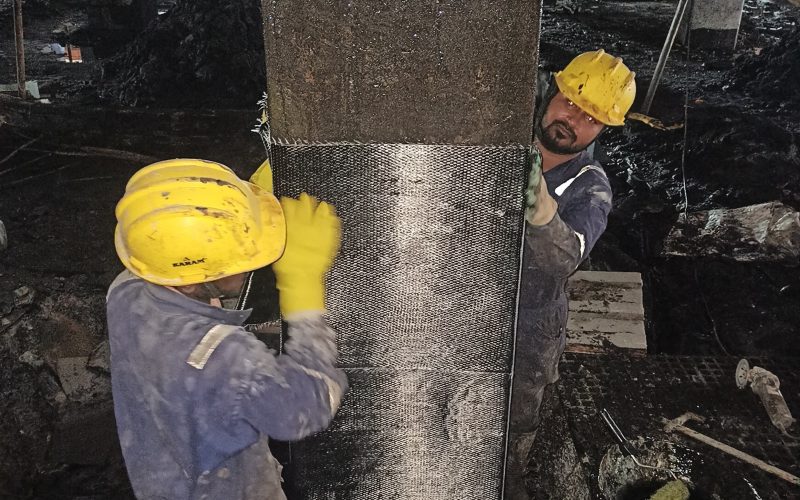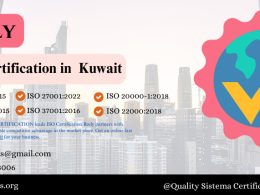Introduction
Across India, many older buildings are not designed to withstand the intensity of modern seismic activities. Urban centers like Delhi, Guwahati, and even Chennai lie in moderate to high-risk earthquake zones. Therefore, upgrading structural stability has become a national priority. Among the various retrofitting methods available today, Column Jacketing stands out as an effective, economical, and proven solution for strengthening vulnerable columns in old structures and ensuring long-term safety.
Why Seismic Retrofitting Is Crucial in India
Earthquakes pose a serious threat to buildings, especially those built before updated building codes were enforced. In India, numerous structures lack proper reinforcement detailing. As a result, they fail to resist lateral forces generated during seismic events. Thus, retrofitting becomes necessary for safety and compliance. Column Jacketing helps existing structures meet seismic resistance standards, particularly in schools, hospitals, and government buildings located in earthquake-prone zones.
What is Column Jacketing?
Column jacketing is the process of adding a layer of reinforcement around existing concrete columns. This may include steel plates, concrete layers, or fiber-reinforced polymer wraps. The main goal is to increase both strength and ductility. When applied correctly, Column Jacketing significantly improves a building’s ability to withstand seismic shocks. It resists column buckling and prevents sudden failures during earthquakes. Moreover, it increases load-carrying capacity, ensuring a longer service life.
When Should You Consider Column Jacketing?
Property owners must be aware of key signs that their structure may need retrofitting. Cracks in columns, rusted reinforcements, or age-related deterioration are primary indicators. Additionally, if floor loads have increased due to renovation or usage changes, Column Jacketing becomes essential. In India, many heritage or government buildings are being converted into commercial spaces. Before such conversions, strengthening columns ensures the safety of occupants and complies with updated building norms.
Benefits of Column Jacketing in Indian Conditions
India’s varied climate—from high humidity in Kerala to dry heat in Rajasthan requires versatile repair methods. One major benefit of Column Jacketing is its adaptability. It can be customized based on material availability and environmental exposure. Steel jacketing suits dry areas, while concrete jackets work well in humid zones. In cities like Bengaluru, where IT buildings operate continuously, jacketing causes minimal disruption. Therefore, it balances safety with operational convenience.
Types of Column Jacketing Methods Used in India
Several jacketing techniques are in use today. Each has its specific applications based on site and performance needs:
- Concrete Jacketing: Adds new concrete layers and reinforcements around old columns.
- Steel Jacketing: Encloses columns in steel plates, offering high tensile strength.
- FRP Jacketing: Uses fiber-reinforced polymers for lightweight, corrosion-resistant wrapping.
Among these, Column Jacketing using concrete is widely used in Indian residential retrofits. However, public infrastructure projects increasingly use FRP due to its durability and ease of application.
Detailed Process of Column Jacketing
The success of the jacketing process depends on proper preparation and execution. Initially, the damaged or weak column surface is cleaned thoroughly. Any loose concrete is removed, and the existing reinforcement is checked. Then, additional steel bars or stirrups are installed to enhance strength. The chosen jacketing material is placed carefully around the column. Throughout the process, quality checks are essential. Effective Column Jacketing must ensure perfect bonding between old and new materials.
Structural Performance After Jacketing
Once implemented, column jacketing increases the column’s cross-sectional area and moment of inertia. This improves axial load capacity and flexural strength. More importantly, it enhances ductility, which is vital during earthquakes. Indian buildings with Column Jacketing have shown much higher performance during simulated seismic tests. In earthquake-prone states like Uttarakhand, retrofitted buildings withstood recent tremors without visible damage, proving the effectiveness of this strengthening method.
Challenges Faced During Implementation in India
While column jacketing is effective, it also comes with challenges. Skilled labor is required to ensure precision. In India, not all construction workers are trained in seismic retrofitting. Another challenge is limited working space in congested cities. Sometimes, existing structures don’t allow room for added material. However, using slim-profile jacketing materials helps in such cases. Despite these hurdles, Column Jacketing remains one of the most accessible and reliable strengthening solutions for Indian buildings.
Safety Standards and Compliance Requirements
Retrofitting is not just a structural improvement it is a safety mandate. The Bureau of Indian Standards (BIS) provides clear guidelines for seismic retrofitting. IS 13920 and IS 15988 are particularly relevant. Before applying Column Jacketing, engineers must conduct a detailed structural audit. Post-retrofitting, authorities may also require strength testing and approval. Complying with these standards not only improves building performance but also protects owners from future liabilities.
Applications in Various Indian Sectors
Different sectors across India have embraced column jacketing to meet safety goals:
- Education: Schools in rural Uttarakhand have used jacketing to meet disaster management protocols.
- Healthcare: Hospitals in Assam adopted Column Jacketing to remain functional during seismic events.
- Residential: Apartment complexes in Delhi NCR have used it to improve resale value and safety.
These use cases show that retrofitting isn’t limited to commercial buildings. Individual homeowners and community structures are also increasingly investing in column strength enhancement.
Cost Considerations for Indian Property Owners
One of the key concerns among Indian property owners is cost. Many fear retrofitting will be too expensive. However, compared to complete rebuilding, Column Jacketing is highly economical. It saves time and labor, and the building can often remain operational. Cost varies depending on material, size, and structural condition. On average, for mid-sized buildings, jacketing is 60% cheaper than full-scale demolition and reconstruction. Government incentives may also apply in certain seismic zones.
Sustainability and Environmental Impact
Retrofitting old structures supports environmental sustainability. Demolition produces large volumes of debris and requires fresh raw materials. Column Jacketing preserves the original structure, reduces waste, and saves resources. Additionally, modern jacketing materials have a lower carbon footprint. In a country like India, where rapid urbanization puts pressure on resources, eco-friendly construction practices are crucial. Sustainable retrofitting also aligns with India’s climate goals under international agreements.
Real-World Case Study in Indian Context
A real-world success story involves a government office building in Shimla. Built in the 1960s, it failed seismic evaluations. Instead of demolishing, engineers opted for Column Jacketing using reinforced concrete. The building passed all safety audits post-retrofitting. Importantly, operations continued during the upgrade, ensuring zero loss of working hours. Similar projects in Mumbai’s old municipal structures have shown great outcomes too. These examples prove that jacketing can bring new life to aging infrastructure.
Future Scope of Retrofitting in Indian Infrastructure
With Smart City initiatives and rapid urban development, structural safety is more critical than ever. Government policies are slowly mandating retrofitting for older buildings. In the coming years, Column Jacketing is expected to become part of standard repair practices. Advances in jacketing materials, such as corrosion-proof resins and lightweight alloys, will further enhance its utility. Training programs and certification courses for retrofitting professionals will boost quality and adoption across the country.
India stands at a turning point in its approach to structural safety. With an aging building stock and increasing seismic risks, smart retrofitting methods are no longer optional. Column Jacketing offers a practical, proven, and economical way to reinforce building columns without disrupting everyday life. Whether it’s an old residential building in Kolkata or a government office in Srinagar, jacketing strengthens the core of the structure.












